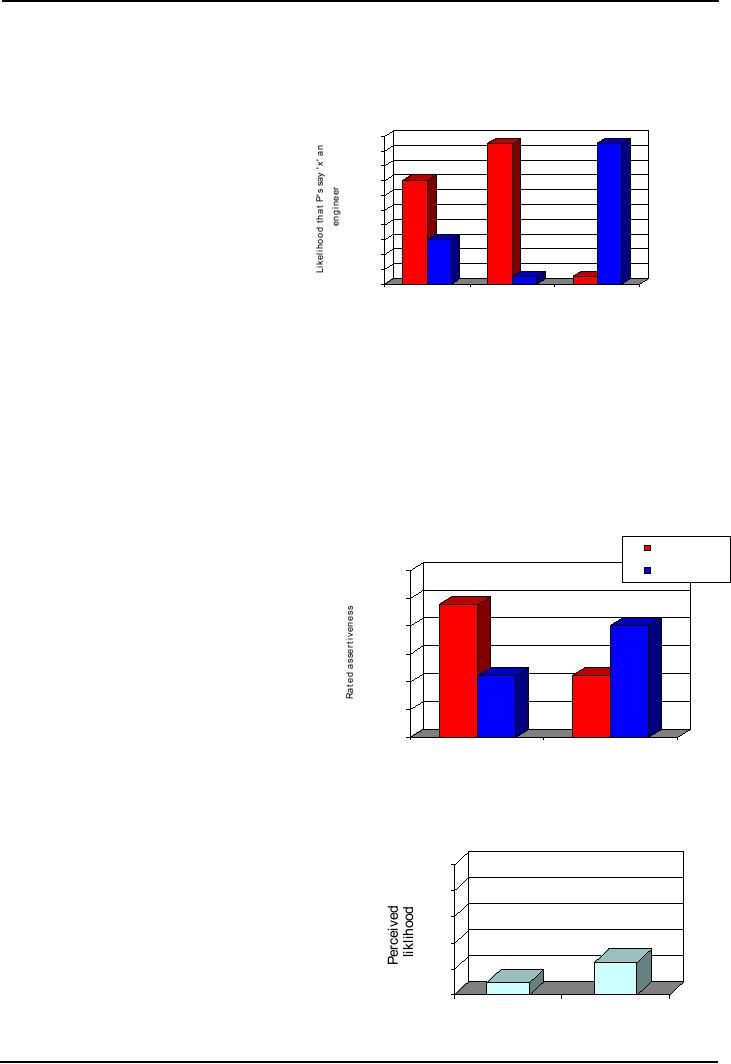 |

Social
Psychology (PSY403)
VU
Lesson
18
SOCIAL
COGNITION
Aims
To
acquaint students with the
concept of social cognition and cognitive
misers in making sense of
their
social
world.
Objectives
�
To
understand the dual process of social
cognition
�
To
describe how do we organize and
make sense of social information
through social
categorization
and schemas.
�
To
discuss what shortcuts
stretch our cognitive
resources.
What
is Social Cognition?
Social
cognition is the way we analyse, remember, and
use information about the social
world (Berkowitz
&
Devine, 1995)
Social
cognition focuses on
the way we use this
information to arrive at coherent
judgments.
Dual-Process
models of social cognition:
strategies
�
Explicit
cognition: Deliberate judgments or decisions of
which we are consciously
aware
�
Implicit
cognition: Judgments or decisions that
are under the control of
automatically activated
evaluations
How
do we organize and make
sense of social
information
Usually
we make quick impression of people based
on minimal information available and we
do not have
luxury
of engaging in detailed impression.
Luckily then we come
equipped with alternative social
strategies
that
rely on implicit cognition. To
make sense of our social
world, we categorize things, and
develop
theories
(schemas) of how the social world
operates.
We
are categorizing creatures
�
A
mental grouping of objects, ideas, or
events that share common
properties is known as
category
concepts
�
Categories
are building blocks of
cognitions
�
Bruner,
Goodnow, & Austin (1956)
indicated that category membership is
determined via
defined
features,
i.e., an animal with three
body divisions, six legs, an
external skeleton, and a
rapid
reproductive
system = INSECT. If one or more of
these attributes is missing the animal
is
something
else.
�
Expands
our ability to deal with the
huge amount of information
Social
categorization (Hampson, 1988)
�
The
classification of people into groups
based on their common
attributes
�
Usually
done on the basis of readily apparent
physical features: sex, age,
and race; primary
categories
for human beings (Schneider, 2004);
special for evolutionary and
socio-cultural reasons
�
BUT...many
categories have uncertain or `Fuzzy'
boundaries (Rosch, 1978) and do not
fit in with a
strict
classification system.
73

Social
Psychology (PSY403)
VU
�
Category
refers to features that characterize the
most typical (McGarry,
1999).
�
Prototypes
are the most representative members of a
category (Barsalou,
1991).
�
Categorization
of less typical members may
be slower/errorful because they
are less available
(male
nurses).
�
Correct
categorization depends on how
similar a given instance is to the
prototype, e.g., the
prototype
of the category `engineers' is a male
which may lead to errors in
categorization when
encountering
a female engineer. Similarly the
prototype of a "nurse" fits
well with a female.
Developing
Schemas
�
We
not only mentally group
objects, ideas, or events into
categories, but we also develop
theories
about
these categories, called
schemas.
�
A
schema
is
an organized, structured set of
cognitions about a concept.
�
Event
schemas are known as
scripts.
�
Schemas
are often called stereotypes
when applied to members of a social
group
�
Schemas
can be about particular
people, social roles, groups, or common
events.
�
People
are good or bad in certain
schemas, like someone's computer
schema may not be
good.
Advantages
of Schematic Processing
�
Schemas
Aid Information Processing
�
Schemas
Aid Recall
�
Schemas
Speed Up Processing
�
Schemas
Aid Automatic Inference
�
Schemas
Add Information
�
Schemas
Aid Interpretation
�
Schemas
Provide Expectations
�
Schemas
Contain Affect
What
shortcuts stretch our
cognitive resources: The
cognitive miser?
�
Processing
resources are valuable so we
engage in timesaving mental
shortcuts when trying
to
understand
the social world (Fiske & Taylor,
1991)
�
Timesaving
mental shortcuts, called heuristics,
reduce complex judgements to simple
rules-of-
thumb
(Tversky & Kahneman, 1974)
�
Advantages
of using cognitive miser are: 1. quick
social judgement and, 2. reasonable
accuracy
�
Quick
and easy - but can result in
biased information processing
(Ajzen, 1996)
A.
The Representativeness
Heuristic
�
The
tendency to judge the category membership of
people based on how closely
they match the
prototypical
member of that category.
There is an old saying that
"It looks like a duck, it
quakes
like
a duck, then it is probably a
duck"
�
One
important qualifying information is
base rates
�
Importance
of personal descriptions vs. base-rate
information: study by Tversky &
Kahneman
(1973)
where they told the research
participants that an imaginary
named Jack had been
selected
from
a group of 100 people. Some
were told that 30 were engineer and
others were told that 70
of
100
were engineers. Half of them were given a
description of jack that
either fit the omen
stereotype
of an engineer or did not.
Then they were asked to
guess the probability that
Jack was an
engineer.
The results showed that
when participants received
only importance related to
base rates,
they
were more likely to guess that he
was an engineer, but when
they received information
about
jack's
personality, they tended to ignore the
base-rate information. This tendency is
known as base-
rate
fallacy.
74

Social
Psychology (PSY403)
VU
Figure
1 illustrates this study.
S
tu d y o f T v e rs k y & K a h n e m a n
(1
9 7 3 )
B.
The Availability
Heuristic
The
tendency to judge the
frequency
or probability of an
100
event
in terms of how easy it
is
90
to
think of examples of
that
80
70
event
(accessibility, Tversky &
60
Kahneman
(1973), e.g., plane
50
crashes.
40
30
20
Study
of Schwarz et al.
(1991)
10
0
�
Recall
12 (cognitively
Ba
s e r a t e in fo
Ba
s e ra t e in fo + Ba s e ra t e in fo +
re
p re s e n t a t iv e un r e p re s e n t a t iv e
difficult)
vs. 6 (cognitively
d
e s c r ip t io n
d
e s c r ip t io n
easy)
examples of assertive and unassertive
behaviour
�
Rate
assertiveness
�
People
attend to the difficulty of retrieving
instances of certain behaviours rather
than just the
content
Figure
2 illustrates this
study
C.The
Anchoring & adjustment
Heuristic
R
a t e d a s s e r t iv e n e s s fo llo w in g r e t r ie v a l o
f
�
Anchoring
is the tendency to be biased
a
s s e r t iv e b e h a v io u r s
towards
the starting value or anchor in
6
it e m s
making
quantitative judgements
7
1
2 it e m s
�
In
a survey study Plous (1989)
asked
6
.5
one
of the following questions from
the
respondents:
6
1.
Is there a greater than 1%
5
.5
chance
of a nuclear war
occurring
soon? (10%), OR
5
2.
Is there less than a
90%
4
.5
chance
of a nuclear war
4
occurring
soon? (25%)
A
s s e r t iv e b e h a v io u r
U
n a s s e r t iv e
b
e h a v io u r
Estimated
chances of a nuclear
The
results of this study are
illustrated in Figure
3
war
100
Reading
3.
Franzoi, S. (2003). Social
Psychology.
80
Boston:
McGraw-Hill. Chapter 5.
60
40
25
20
10
0
>1%
<90%
Anchor
75
Table of Contents:
- INTRODUCTION TO SOCIAL PSYCHOLOGY:Readings, Main Elements of Definitions
- INTRODUCTION TO SOCIAL PSYCHOLOGY:Social Psychology and Sociology
- CONDUCTING RESEARCH IN SOCIAL PSYCHOLOGY:Scientific Method
- CONDUCTING RESEARCH IN SOCIAL PSYCHOLOGY:Evaluate Ethics
- CONDUCTING RESEARCH IN SOCIAL PSYCHOLOGY RESEARCH PROCESS, DESIGNS AND METHODS (CONTINUED)
- CONDUCTING RESEARCH IN SOCIAL PSYCHOLOGY OBSERVATIONAL METHOD
- CONDUCTING RESEARCH IN SOCIAL PSYCHOLOGY CORRELATIONAL METHOD:
- CONDUCTING RESEARCH IN SOCIAL PSYCHOLOGY EXPERIMENTAL METHOD
- THE SELF:Meta Analysis, THE INTERNET, BRAIN-IMAGING TECHNIQUES
- THE SELF (CONTINUED):Development of Self awareness, SELF REGULATION
- THE SELF (CONTINUE…….):Journal Activity, POSSIBLE HISTORICAL EFFECTS
- THE SELF (CONTINUE……….):SELF-SCHEMAS, SELF-COMPLEXITY
- PERSON PERCEPTION:Impression Formation, Facial Expressions
- PERSON PERCEPTION (CONTINUE…..):GENDER SOCIALIZATION, Integrating Impressions
- PERSON PERCEPTION: WHEN PERSON PERCEPTION IS MOST CHALLENGING
- ATTRIBUTION:The locus of causality, Stability & Controllability
- ATTRIBUTION ERRORS:Biases in Attribution, Cultural differences
- SOCIAL COGNITION:We are categorizing creatures, Developing Schemas
- SOCIAL COGNITION (CONTINUE…….):Counterfactual Thinking, Confirmation bias
- ATTITUDES:Affective component, Behavioral component, Cognitive component
- ATTITUDE FORMATION:Classical conditioning, Subliminal conditioning
- ATTITUDE AND BEHAVIOR:Theory of planned behavior, Attitude strength
- ATTITUDE CHANGE:Factors affecting dissonance, Likeability
- ATTITUDE CHANGE (CONTINUE……….):Attitudinal Inoculation, Audience Variables
- PREJUDICE AND DISCRIMINATION:Activity on Cognitive Dissonance, Categorization
- PREJUDICE AND DISCRIMINATION (CONTINUE……….):Religion, Stereotype threat
- REDUCING PREJUDICE AND DISCRIMINATION:The contact hypothesis
- INTERPERSONAL ATTRACTION:Reasons for affiliation, Theory of Social exchange
- INTERPERSONAL ATTRACTION (CONTINUE……..):Physical attractiveness
- INTIMATE RELATIONSHIPS:Applied Social Psychology Lab
- SOCIAL INFLUENCE:Attachment styles & Friendship, SOCIAL INTERACTIONS
- SOCIAL INFLUENCE (CONTINE………):Normative influence, Informational influence
- SOCIAL INFLUENCE (CONTINUE……):Crimes of Obedience, Predictions
- AGGRESSION:Identifying Aggression, Instrumental aggression
- AGGRESSION (CONTINUE……):The Cognitive-Neo-associationist Model
- REDUCING AGGRESSION:Punishment, Incompatible response strategy
- PROSOCIAL BEHAVIOR:Types of Helping, Reciprocal helping, Norm of responsibility
- PROSOCIAL BEHAVIOR (CONTINUE………):Bystander Intervention, Diffusion of responsibility
- GROUP BEHAVIOR:Applied Social Psychology Lab, Basic Features of Groups
- GROUP BEHAVIOR (CONTINUE…………):Social Loafing, Deindividuation
- up Decision GROUP BEHAVIOR (CONTINUE……….):GroProcess, Group Polarization
- INTERPERSONAL POWER: LEADERSHIP, The Situational Perspective, Information power
- SOCIAL PSYCHOLOGY APPLIED: SOCIAL PSYCHOLOGY IN COURT
- SOCIAL PSYCHOLOGY APPLIED: SOCIAL PSYCHOLOGY IN CLINIC
- FINAL REVIEW:Social Psychology and related fields, History, Social cognition